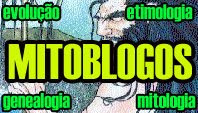sexta-feira, 18 de novembro de 2011
Pampadromaeus barberenai
Place: Santa Maria Formation, Alemoa Member;
Time: Late Triassic - Upper Carnian;
Size: 1,5m.
Etymology: . The generic name maximus means runner "from the Pampas", and specific name honours the Brazilian palaeontologist Mário C. Barberena.
New stem-sauropodomorph (Dinosauria, Saurischia) from the Triassic of Brazil
Sergio F. Cabreira, Cesar L. Schultz, Jonathas S. Bittencourt, Marina B. Soares and Daniel C. Fortier, et al.
Naturwissenschaften
DOI 10.1007/s00114-011-0858-0 Online First™, 14 November 2011
Abstract
Post-Triassic theropod, sauropodomorph, and ornithischian dinosaurs are readily recognized based on the set of traits that typically characterize each of these groups. On the contrary, most of the early members of those lineages lack such specializations, but share a range of generalized traits also seen in more basal dinosauromorphs. Here, we report on a new Late Triassic dinosaur from the Santa Maria Formation of Rio Grande do Sul, southern Brazil. The specimen comprises the disarticulated partial skeleton of a single individual, including most of the skull bones. Based on four phylogenetic analyses, the new dinosaur fits consistently on the sauropodomorph stem, but lacks several typical features of sauropodomorphs, showing dinosaur plesiomorphies together with some neotheropod traits. This is not an exception among basal dinosaurs, the early radiation of which is characterized by a mosaic pattern of character acquisition, resulting in the uncertain phylogenetic placement of various early members of the group.
segunda-feira, 31 de outubro de 2011
Aeolosaurus maximus
Place: Adamantina Formation, near Monte Alto, Sao Paulo State;
Time: Late Cretaceous - Campanian-Maastrichtian;
Size: 16m.
Etymology: . The specific name maximus means biggest.
Santucci, R.M., & A.C. de Arruda-Campos. 2011. A new sauropod (Macronaria, Titanosauria) from the Adamantina Formation, Bauru Group, Upper Cretaceous of Brazil and the phylogenetic relationships of Aeolosaurini. Zootaxa 3085:1-33.
quinta-feira, 17 de março de 2011
Oxalaia quilombensis
Place: Alcântara Formation, Itapecuru Group, Parnaíba Basin, Itapecuru-Mirim, Maranhão State
Time: Cenomanian, Early Cretaceous;
Size: 14-15m;
Taxonomy: Theropoda, Tetanurae, Spinosauroidea, Spinosauridae.
KELLNER, Alexander WA. et al. A new dinosaur (Theropoda, Spinosauridae) from the Cretaceous (Cenomanian) Alcântara Formation, Cajual Island, Brazil. An. Acad. Bras. Ciênc. [online]. 2011, vol.83, n.1, pp. 99-108. ISSN 0001-3765.
A new spinosaurid taxon, Oxalaia quilombensis gen. et sp. nov., is described based on the anterior part of a snout and a fragment of a maxilla. These specimens were collected at the Laje do Coringa site, Late Cretaceous (Cenomanian) of the São Luis Basin. Unlike Cristatusaurus and Suchomimus, Oxalaia quilombensis lacks serrations on the teeth. The new species differs from Angaturama limai by having the anterior part of the premaxillae more expanded and by lacking a sagittal premaxillary crest. It further differs from Spinosaurus cf. S. aegyptiacus and the Algerian spinosaurid by the rounder shape of the terminal expansion. Furthermore, xalaia quilobensis has one functional tooth followed by two replacement teeth, a feature not previously observed in theropods. Oxalaia quilombensis appears to be more closely related to the spinosaurids found in North Africa than to the Brazilian members of this clade and thus further increases the diversity of these enigmatic predatory dinosaurs in this country.
terça-feira, 8 de fevereiro de 2011
Tapuiasaurus macedoi
Place: Quiricó Formation, near Coração de Jesus, Minas Gerais State;
Time: Early Cretaceous - Aptian;
Size: ?.
Etymology: From ‘‘Tapuia’’, a generic name from the Jês indigenous language family used to designate tribes that inhabited the inner regions of Brazil, and sauros, Greek for lizard. The
specific name honors Ubirajara Alves Macedo, who first discovered the deposits near Coração de Jesus.
Zaher H, Pol D, Carvalho AB, Nascimento PM, Riccomini C, et al. 2011 A Complete Skull of an Early Cretaceous Sauropod and the Evolution of Advanced Titanosaurians. PLoS ONE 6(2): e16663. doi:10.1371/journal.pone.0016663
Original Abstract:
segunda-feira, 2 de novembro de 2009
Marília Formation
A Formação Marília é parte do Grupo Bauru. Apesar de nomeada a partir de terrenos situados no município de Marília, Estado de São Paulo, apesar de incluir sítios nos estados de Minas Gerais e Goiás. Sua idade é considerada como do Maastrichtiano Superior, a última divisão do período Cretáceo.
Baurubatrachus pricei Báez & Perí, 1989 - Amphibia, Anura
Cambaremys langertoni França & Langer, 2005 - Chelonia
Pristiguana brasiliensis Estes & Price, 1973
Peirosaurus tormini Price, 1955
Uberabasuchus terrificus Carvalho et alii, 2004
Itasuchus jesuinoi Price, 1955
Aeolosaurus sp.
Trigonosaurus pricei Kellner et alii, 2006
Uberabatitan ribeiroi Salgado & Carvalho, 2008
Abelisauridae indet.
Fontes:
Candeiro, C.R.A.; Martinelli, A.G.; Ávilla, L.S. & Rich, T.H. 2006. Tetrapods from the Upper
Cretaceous (Turonian & Maastrichtian) Bauru Group of Brazil: a reappraisal. Cretaceous Research, 27: 923-946.
NOVAS, F.E.; CARVALHO, I.S.; RIBEIRO, L.C.B. & MÉNDEZ, A.H., 2008. First Abelisaurid Bone Remains from the maastrichtian Marília Formation, Bauru Basin In: Cretaceous Research, 29, p. 625-635.
terça-feira, 22 de julho de 2008
Taxonomy
- Sacisaurus
Dinosauria Owen, 1842
- Teyuwasu
- Ornithischia Seeley, 1888
- Saurischia Seeley, 1887
-- Herrerasauria Galton, 1985
--- Staurikosaurus
-- Sauropodomorpha Huene, 1932
--- "Prosauropoda" Huene, 1920
--- (?) Saturnalia
---- Unaysaurus
--- Sauropoda Marsh, 1878
---- Gravisauria Allain & Aquesbi, 2008
----- Eusauropoda
------Neosauropoda Bonaparte, 1986
------- Macronaria
-------- Titanosauria
--------- Lithostrotia (ex-Titanosauridae)
---------- Eutitanosauria
----------- Aeolosaurini
------------ Gondwanatitan
------------ Adamantisaurus
-- Theropoda Marsh, 1881
-- (?) Guaibasaurus
--- Ceratosauria Marsh, 1884
---- Abelisauroidea Bonaparte & Novas, 1985
----- Abelisauridae Bonaparte & Novas, 1985
--- Tetanurae Gauthier, 1986
---- Spinosauroidea
----- Angaturama
----- Irritator
---- Avetheropoda Paul, 1988 (= Neotetanurae Sereno, 1999)
----- Carnosauria ( = Allosauroidea Marsh, 1878)
------ Carcharodontosauridae Stromer, 1931
------- Carcharodontosaurinae
------- Giganotosaurinae Coria & Currie, 2006
----- Coelurosauria Huene, 1920
Uberaba Formation
Sauropoda n.sp. et gen.
Sauropoda “Megalodontidae” indet.
Sauropoda Titanosauria indet.
Aeolosaurus sp.
References:
Santucci, R. M. (2002). Revisão dos titanosaurideos do Cretáceo Superior do Brasil. Master Dissertation. Universidade Estadual Paulista/Rio Claro, 179 p.
Candeiro, C. R. A. (2007) - Cretaceous biota of the Triângulo Mineiro region (Brazil): A review of recent finds / Biota cretácica de la región del Triângulo Mineiro (Brasil): Revisión de hallazgos recientes. Estudios Geológicos, 63 (1) Jan-Jun 2007, pgs. 65-73.


